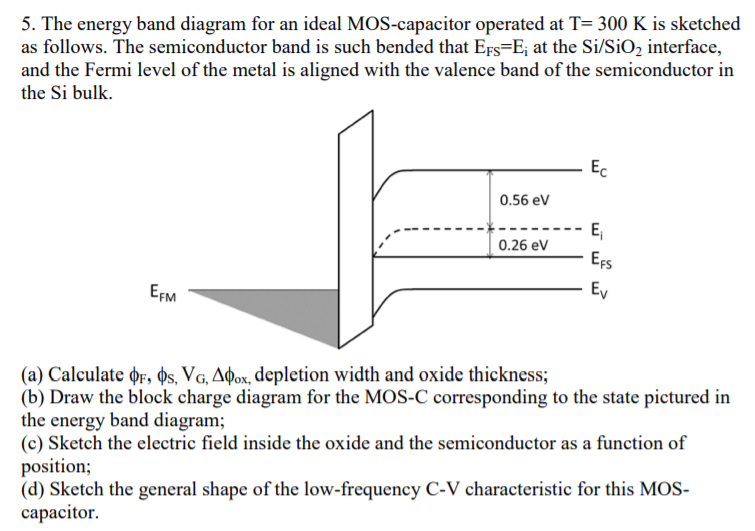The energy band diagram for an ideal MOS-capacitor operated at T = 300 K is sketched as follows. The semiconductor band is such bended that EFS = Ei at the Si/SiO2 interface, and the Fermi level of the metal is aligned with the valence band of the semiconductor in the Si bulk. (a) Calculate ϕF, ϕs, VG, Δϕox, depletion width and oxide thickness; (b) Draw the block charge diagram for the MOS-C corresponding to the state pictured in the energy band diagram; (c) Sketch the electric field inside the oxide and the semiconductor as a function of position; (d) Sketch the general shape of the low-frequency C-V characteristic for this MOS-capacitor.
